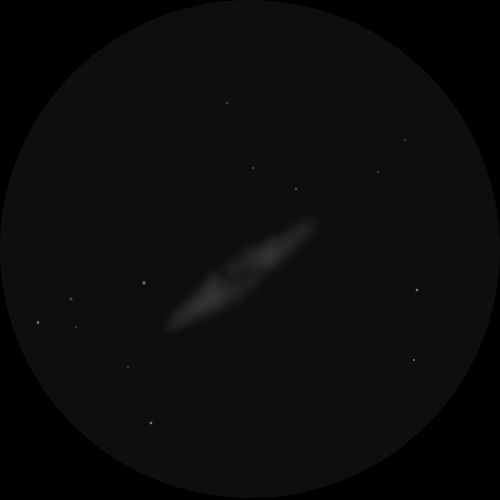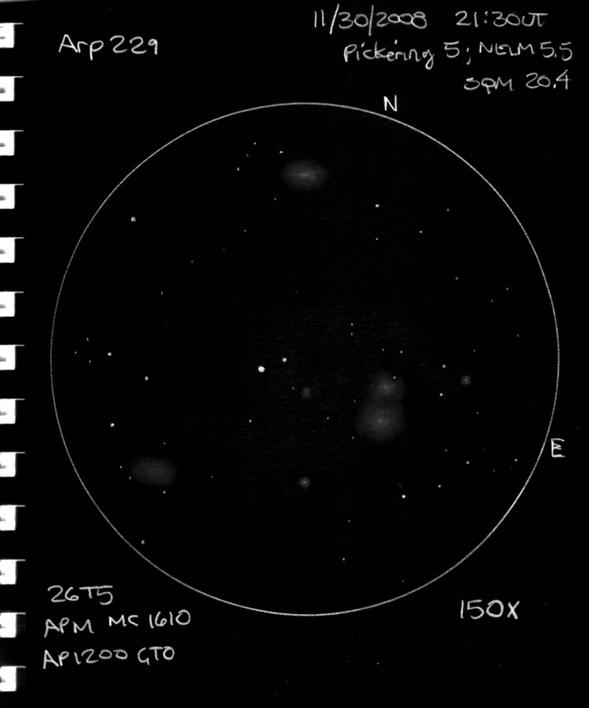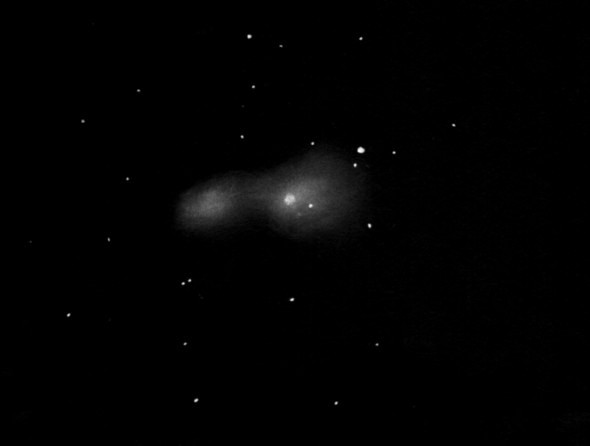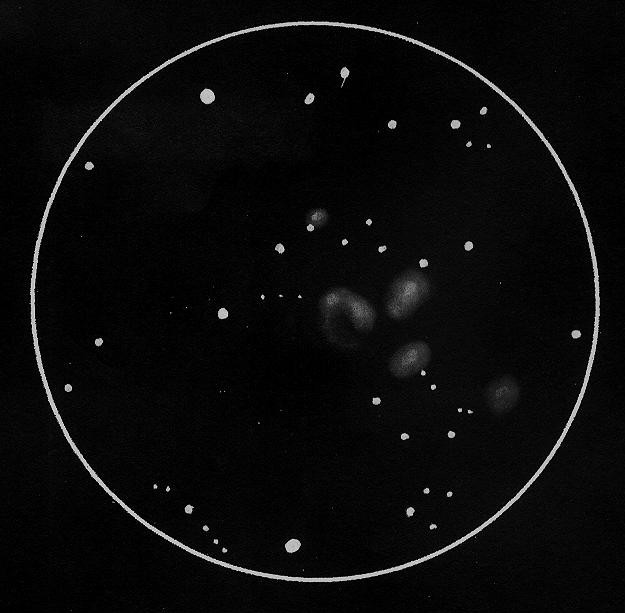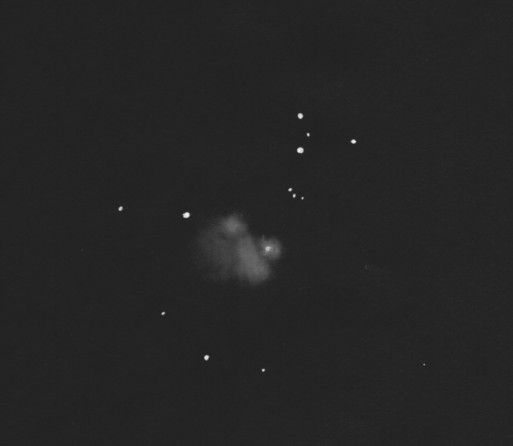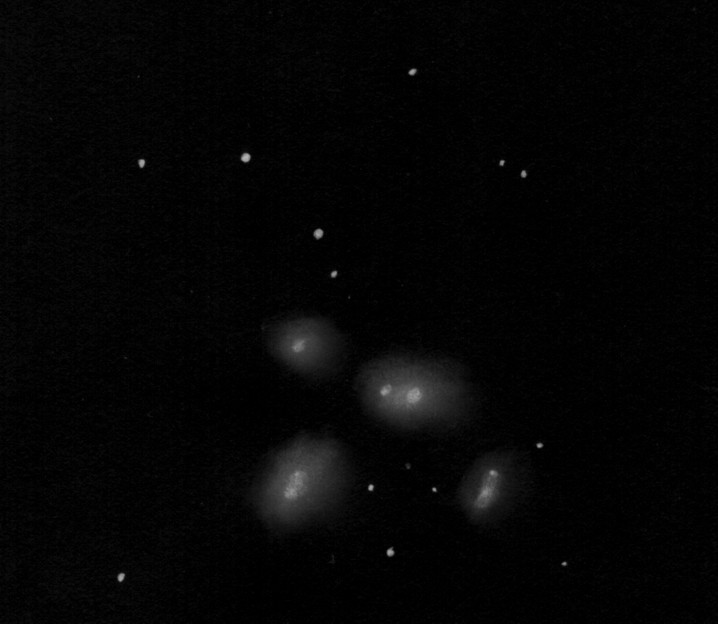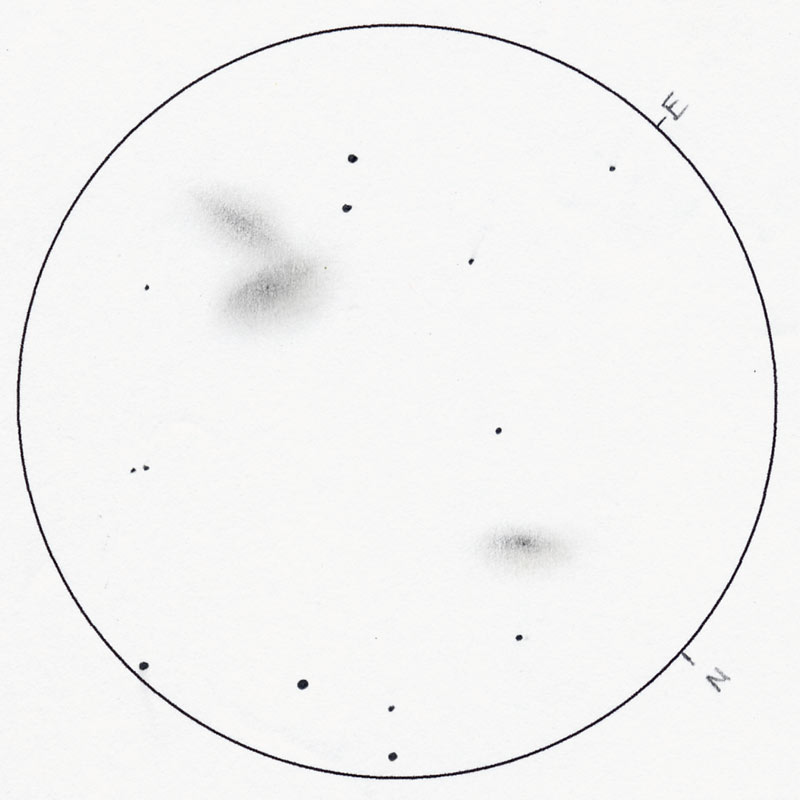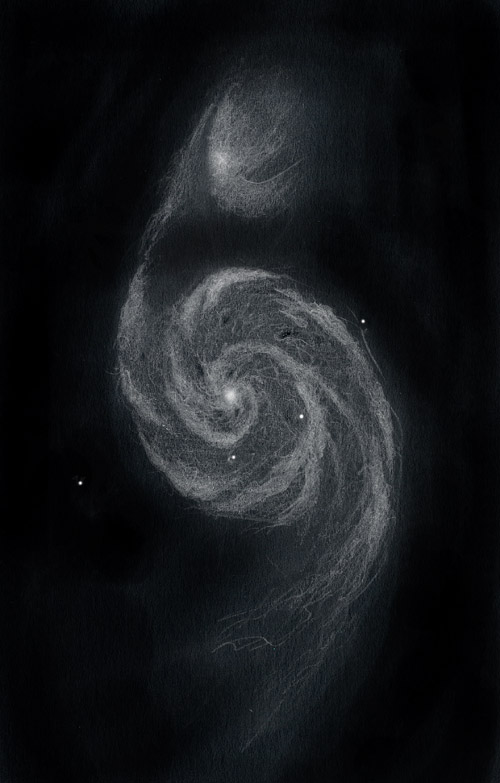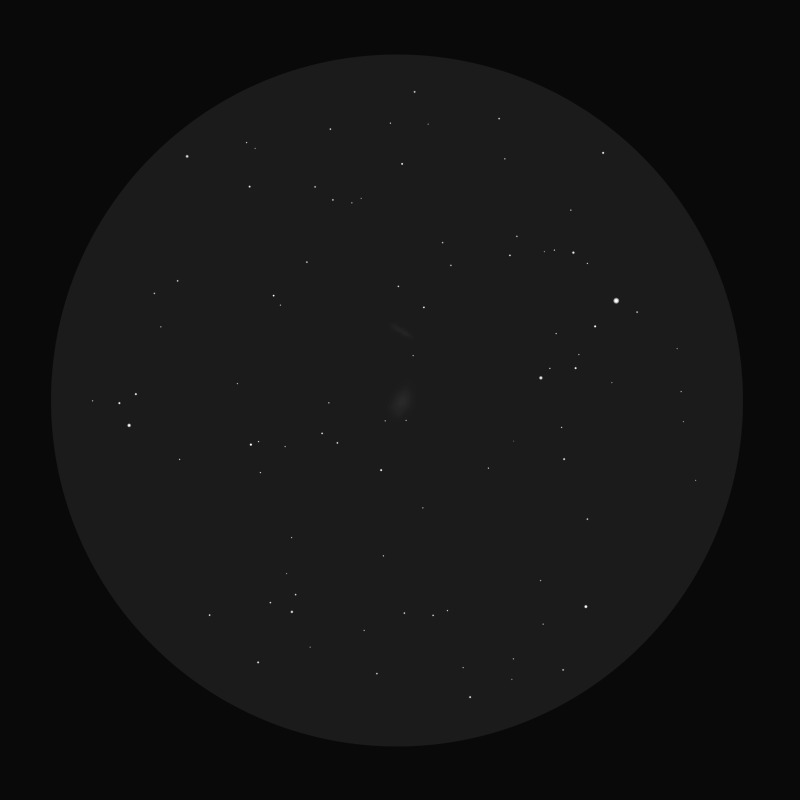
M81 and M82 in Ursa Major
Sketch and Details by Rony De Laet
M81 and M82 an Ursa Major Pair
The famous M81 and M82 form a nice duo in a pair of binoculars. First try to locate the star 24 Ursae Majoris. With that star in the center of the fov, M81 should be visible near the western edge of the field. M82 can be glimpsed at about 40′ to the north of M81. M81 is the brighter one of the two. It looks like a small glowing patch of light. Its center appears to be a tad brighter. M82 is rather weak, but the cigar shape is clearly present! I find it amazing that at a distance of 13 million light years, this duo is recognizable in a simple pair of binoculars.
Observing data:
Date : March 31, 2008
Time : around 21.30UT
Binoculars : Bresser 8×56
FOV: 5,9°
Filter : none
Mount : Trico Machine Sky Window
Seeing : 2,5/5
Transp. : 2,5/5
Nelm : 5,0
Sketch Orientation : N up, W right.
Digital sketch made with PhotoPaint, based on a raw pencil sketch.
Target data:
NGC 3031(M81) in Ursa Major
Spiral Galaxy
13 million l.y.
Mag: 6.9
SB: 13
Dim 26′.9 x 14′.1
NGC 3034 (M82) in Ursa Major
Irregular Galaxy
13 million l.y.
Mag: 8.4
SB: 12.8
Dim 11′.2 x 4′.3


